It looks like you're using an Ad Blocker.
Please white-list or disable AboveTopSecret.com in your ad-blocking tool.
Thank you.
Some features of ATS will be disabled while you continue to use an ad-blocker.
share:
I am writing this short thread after spending a couple of nights up studying our solar system. I am writing it as a jump off point for anyone who like
me is interested in our solar system but doesn't know where to start.
History of the Gerard Kuiper/Kuiper Belt
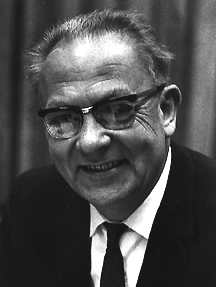
A Dutch astronomer named Gerard Kuiper theorized the idea of the Kuiper belt in 1951. Born Gerrit Pieter Kuiper in 1905, the son of a tailor from Holland from an early age showed a keen interest in astronomy. He had extraordinary eye sight which allowed him to see magnitude 7.5 stars with the naked eye, about four times fainter than visible to normal eyes. He studied at Leiden University under Jan Oort among others and recieved his B.Sc. in Astronomy in 1927. He finished his doctoral thesis on binary stars with Hertzsprung in 1933 and from there he moved to California become a fellow under Robert Grant Aitken at the Lick Observatory. In 1935 he worked at the Harvard College Observatory and then in 1937 he took a position at the Yerkes Observatory of the University of Chicago and became an American citizen.
Kuiper is credited with discovering Uranus's satellite Miranda
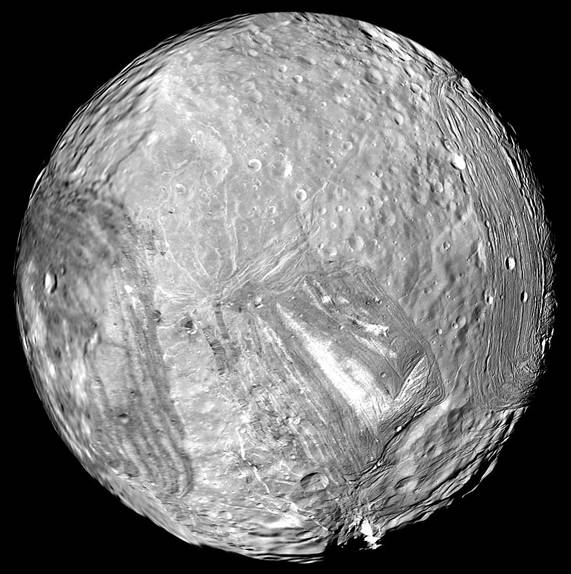
and Neptune's satellite Nereid
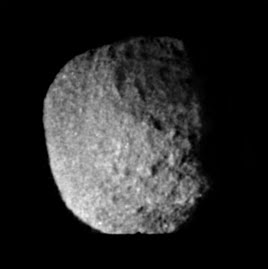
In the 1960s, Kuiper helped identify landing sites on the Moon for the Apollo program.He also he discovered carbon dioxide in the atmosphere of Mars and the existence of a methane-laced atmosphere above Saturn's satellite Titan.
He married Sarah Fuller in 1936. The couple had met when Kuiper was working at Harvard College Observatory. Kuiper passed away while he was on vacation in Mexico with his wife, on December 23, 1973. He died from a heart attack.
The Kuiper Belt was his greatest known achievement.
The Kuiper Belt
The Kuiper Belt is a disk shaped region past the orbit of Neptune, it extends 30 to 50 AU (2.5 to 4.5 billion miles) from the sun. It is 20 bigger than the asteroid belt it is believed there is over 70,00 objects out there.
There is many dwarf planets in the Kuiper belt the largest of which is Eris
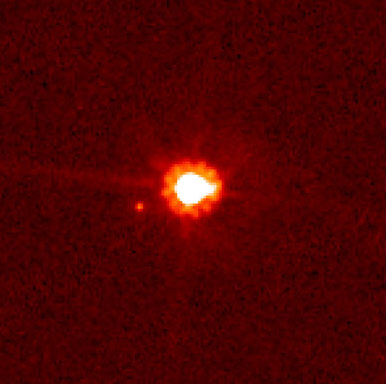
Covered in methane ice Eris is still smaller than the Earth’s Moon, having about two thirds of the Moon’s diameter and one third of its volume. Eris is the most massive dwarf planet in the Solar System, exceeding Pluto’s mass by 28%. As such, it was a serious contender to be a tenth planet but failed to meet the criteria set out by the International Astronomical Union in 2006. Fittingly, picking a name for the object took unusually long – more than 1.5 years after its discovery in 2005. Some of the rejected names were Xena, Lila, and Persephone (Pluto’s wife). It takes icy Eris 557 Earth years to complete a single orbit around our sun.

Discovered in 1930, Pluto is the second closest dwarf planet to the Sun and was at one point classified as the ninth planet. Pluto is also the second most massive dwarf planet.Pluto was discovered on February 18th, 1930 by the Lowell Observatory.For the 76 years between Pluto being discovered and the time it was reclassified as a dwarf planet it completed under a third of its orbit around the Sun.Pluto was reclassified from a planet to a dwarf planet in 2006 this is when the IAU formalised the definition of a planet.
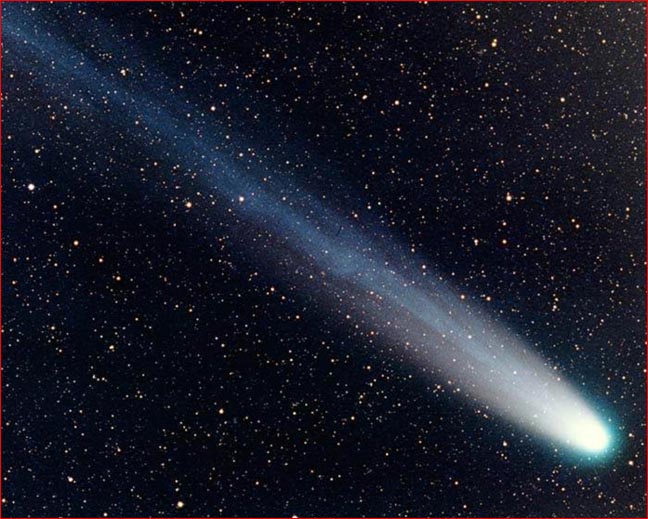
Short-period comets are thought to originate in the Kuiper Belt,these comets take less than 200 years, and long-period comets take over 200 years, with some taking 100,000 to 1 million years to orbit the Sun. The short-period comets are found near the ecliptic, which means they are orbiting the Sun in same plane as the planets. The most famous short-period comet, Halley’s comet, revisits the inner Solar System like clockwork every 76 years.

A strange object called 2001QG298 is rotating like a propeller in the Kuiper belt. The discovery that the spinning object is tilted at nearly 90 degrees to the ecliptic plane is surprising, and suggests that this type of object could be very common in the Kuiper belt. The strange shape of 2001QG298 was uncovered by Dr Scott Sheppard and Prof David Jewitt in 2004. They noticed that 2001QG298's apparent brightness periodically tripled every 7 hours or so. Some ahem "theories" point to this being some sort of interstellar spaceship but I will leave you to draw your own conclusions.
www.newnetherlandinstitute.org...
en.wikipedia.org...
solarsystem.nasa.gov...(Jumping off points)
There is literally thousands more objects/pieces of information I could write about but this was something for me to pass the time. I hope whoever reads this enjoys it and hopefully is a good start to peak their interest in our own solar system.
History of the Gerard Kuiper/Kuiper Belt

A Dutch astronomer named Gerard Kuiper theorized the idea of the Kuiper belt in 1951. Born Gerrit Pieter Kuiper in 1905, the son of a tailor from Holland from an early age showed a keen interest in astronomy. He had extraordinary eye sight which allowed him to see magnitude 7.5 stars with the naked eye, about four times fainter than visible to normal eyes. He studied at Leiden University under Jan Oort among others and recieved his B.Sc. in Astronomy in 1927. He finished his doctoral thesis on binary stars with Hertzsprung in 1933 and from there he moved to California become a fellow under Robert Grant Aitken at the Lick Observatory. In 1935 he worked at the Harvard College Observatory and then in 1937 he took a position at the Yerkes Observatory of the University of Chicago and became an American citizen.
Kuiper is credited with discovering Uranus's satellite Miranda

and Neptune's satellite Nereid

In the 1960s, Kuiper helped identify landing sites on the Moon for the Apollo program.He also he discovered carbon dioxide in the atmosphere of Mars and the existence of a methane-laced atmosphere above Saturn's satellite Titan.
He married Sarah Fuller in 1936. The couple had met when Kuiper was working at Harvard College Observatory. Kuiper passed away while he was on vacation in Mexico with his wife, on December 23, 1973. He died from a heart attack.
The Kuiper Belt was his greatest known achievement.
The Kuiper Belt
The Kuiper Belt is a disk shaped region past the orbit of Neptune, it extends 30 to 50 AU (2.5 to 4.5 billion miles) from the sun. It is 20 bigger than the asteroid belt it is believed there is over 70,00 objects out there.
There is many dwarf planets in the Kuiper belt the largest of which is Eris

Covered in methane ice Eris is still smaller than the Earth’s Moon, having about two thirds of the Moon’s diameter and one third of its volume. Eris is the most massive dwarf planet in the Solar System, exceeding Pluto’s mass by 28%. As such, it was a serious contender to be a tenth planet but failed to meet the criteria set out by the International Astronomical Union in 2006. Fittingly, picking a name for the object took unusually long – more than 1.5 years after its discovery in 2005. Some of the rejected names were Xena, Lila, and Persephone (Pluto’s wife). It takes icy Eris 557 Earth years to complete a single orbit around our sun.

Discovered in 1930, Pluto is the second closest dwarf planet to the Sun and was at one point classified as the ninth planet. Pluto is also the second most massive dwarf planet.Pluto was discovered on February 18th, 1930 by the Lowell Observatory.For the 76 years between Pluto being discovered and the time it was reclassified as a dwarf planet it completed under a third of its orbit around the Sun.Pluto was reclassified from a planet to a dwarf planet in 2006 this is when the IAU formalised the definition of a planet.

Short-period comets are thought to originate in the Kuiper Belt,these comets take less than 200 years, and long-period comets take over 200 years, with some taking 100,000 to 1 million years to orbit the Sun. The short-period comets are found near the ecliptic, which means they are orbiting the Sun in same plane as the planets. The most famous short-period comet, Halley’s comet, revisits the inner Solar System like clockwork every 76 years.

A strange object called 2001QG298 is rotating like a propeller in the Kuiper belt. The discovery that the spinning object is tilted at nearly 90 degrees to the ecliptic plane is surprising, and suggests that this type of object could be very common in the Kuiper belt. The strange shape of 2001QG298 was uncovered by Dr Scott Sheppard and Prof David Jewitt in 2004. They noticed that 2001QG298's apparent brightness periodically tripled every 7 hours or so. Some ahem "theories" point to this being some sort of interstellar spaceship but I will leave you to draw your own conclusions.
www.newnetherlandinstitute.org...
en.wikipedia.org...
solarsystem.nasa.gov...(Jumping off points)
There is literally thousands more objects/pieces of information I could write about but this was something for me to pass the time. I hope whoever reads this enjoys it and hopefully is a good start to peak their interest in our own solar system.
edit on 18-3-2015 by sosobad because: (no reason given)
Cheers swanne , as I said there is possibly hundreds of pages worth of information one could write about the Kuiper. I am just hoping that it
stirs people to take an interest in our own backyard so to speak, that and I had a small bit of time to burn. I usually don't get that luxury these
days lol
edit on 18-3-2015 by sosobad because: (no reason given)
originally posted by: sosobad
Cheers swanne , as I said there is possibly hundreds of pages worth of information one could write about the Kuiper. I am just hoping that it stirs people to take an interest in our own backyard so to speak, that and I had a bit of time to burn, I usually don't get that luxury these days lol
Indeed
What the hell is 2001QG298 ?
Is that type of spin to create a stable gravity inside the object?
www.youtube.com...
I had never heard of this object.
Thanks for teaching me something today!!
Is that type of spin to create a stable gravity inside the object?
www.youtube.com...
I had never heard of this object.
Thanks for teaching me something today!!
originally posted by: nfflhome
What the hell is 2001QG298 ?
Is that type of spin to create a stable gravity inside the object?
www.youtube.com...
I had never heard of this object.
Thanks for teaching me something today!!
That's what is theorized, it has been called in some circles an interstellar spaceship but I think that it is a just a contact binary. It is objects like this and others that make the Kuiper belt fascinating.
a reply to: sosobad
I feel ashamed as a Dutch person somewhat having heard the name The Kuiper (very distinct Dutch name) Belt many times before not having any knowledge about it...at least I have some now, thanks!
I feel ashamed as a Dutch person somewhat having heard the name The Kuiper (very distinct Dutch name) Belt many times before not having any knowledge about it...at least I have some now, thanks!
edit on 18 3 2015 by BornAgainAlien because: (no reason given)
originally posted by: BornAgainAlien
a reply to: sosobad
I feel ashamed as a Dutch person somewhat having heard the name The Kuiper (very distinct Dutch name) Belt many times before not having any knowledge about it...at least I have some now, thanks!
That is exactly the result I was looking for with the thread, to give people an insight to it and maybe start them off on their own research. Thank you and everyone else so far for stopping by
edit on 18-3-2015 by sosobad because: (no reason given)
a reply to: sosobad
A great thread for those who are curious. SNF.
The Kuiper belt is fascinating and could help us further understand the evolution of our solar system and other dwarf planets could be forming as we speak.
It's my understanding that many large asteroids in the innermost asteroid belt are not solid objects but are the result of lesser bodies coalescing into a larger body due to gravity. Maybe that could explain why there are so many dwarf planets in the Kuiper belt region.
A fascinating read nonetheless.
A great thread for those who are curious. SNF.
The Kuiper belt is fascinating and could help us further understand the evolution of our solar system and other dwarf planets could be forming as we speak.
It's my understanding that many large asteroids in the innermost asteroid belt are not solid objects but are the result of lesser bodies coalescing into a larger body due to gravity. Maybe that could explain why there are so many dwarf planets in the Kuiper belt region.
A fascinating read nonetheless.
edit on 18-3-2015 by Thecakeisalie because: (no reason given)
a reply to: sosobad
Another good topic of discussion is the Oort Cloud which sits beyond the Kuiper belt and houses TONS of long period comets.
One of the interesting things about the Oort cloud is that it is a sphere that encircles the entire solar system as opposed to disc that just rings the solar system like the Kuiper Belt.
Another good topic of discussion is the Oort Cloud which sits beyond the Kuiper belt and houses TONS of long period comets.
In 1932, the Estonian astronomer Ernst Öpik postulated that long-period comets originated in an orbiting cloud at the outermost edge of the Solar System.[6] The idea was independently revived by Oort as a means to resolve a paradox.[7] Over the course of the Solar System's existence the orbits of comets are unstable and eventually dynamics dictate that a comet must either collide with the Sun or a planet or else be ejected from the Solar System by planetary perturbations. Moreover, their volatile composition means that as they repeatedly approach the Sun, radiation gradually boils the volatiles off until the comet splits or develops an insulating crust that prevents further outgassing. Thus, Oort reasoned, a comet could not have formed while in its current orbit and must have been held in an outer reservoir for almost all of its existence.[7][8][9]
The outer Oort cloud may have trillions of objects larger than 1 km (0.62 mi),[3] and billions with absolute magnitudes[14] brighter than 11 (corresponding to approximately 20-kilometre (12 mi) diameter), with neighboring objects tens of millions of kilometres apart.[5][15] Its total mass is not known, but, assuming that Halley's Comet is a suitable prototype for comets within the outer Oort cloud, roughly the combined mass is 3×1025 kilograms (6.6×1025 pounds), or five times that of Earth.[3][16] Earlier it was thought to be more massive (up to 380 Earth masses),[17] but improved knowledge of the size distribution of long-period comets led to lower estimates. The mass of the inner Oort cloud has not been characterized.
If analyses of comets are representative of the whole, the vast majority of Oort-cloud objects consist of ices such as water, methane, ethane, carbon monoxide and hydrogen cyanide.[18] However, the discovery of the object 1996 PW, an object whose appearance was consistent with a D-type asteroid[19][20] in an orbit typical of a long-period comet, prompted theoretical research that suggests that the Oort cloud population consists of roughly one to two percent asteroids.[21] Analysis of the carbon and nitrogen isotope ratios in both the long-period and Jupiter-family comets shows little difference between the two, despite their presumably vastly separate regions of origin. This suggests that both originated from the original protosolar cloud,[22] a conclusion also supported by studies of granular size in Oort-cloud comets[23] and by the recent impact study of Jupiter-family comet Tempel 1.[24]
One of the interesting things about the Oort cloud is that it is a sphere that encircles the entire solar system as opposed to disc that just rings the solar system like the Kuiper Belt.
a reply to: Krazysh0t
I was just reading up more on the Oort cloud in the last few hours.
A proposed idea to reach the Oort cloud
en.m.wikipedia.org...
One could only dream of it happening in the next 10-20 years but I would be a very old man by the time it would reach it, if I was still here at all.
I was just reading up more on the Oort cloud in the last few hours.
A proposed idea to reach the Oort cloud
A small team had initially proposed a beryllium inflated sail that would go down to 0.05 AU from the Sun in order to get an acceleration peaking at 36.4 m/s2, reaching a speed of 0.00264c (about 950 km/s) in less than a day
Such a sail would take "Two and a half years to reach the heliopause, six and a half years to get to the Sun’s inner gravitational focus (at about 550 AU, the point at which light is focused by gravity as it passes the sun[20]), with arrival at the inner Oort Cloud in no more than thirty years
en.m.wikipedia.org...
One could only dream of it happening in the next 10-20 years but I would be a very old man by the time it would reach it, if I was still here at all.
edit on 18-3-2015 by sosobad because: (no reason given)
edit on 18-3-2015 by sosobad because: (no reason given)
Great and informative thread! S & F
Do we have any idea about total mass/size of all of those objects discovered so far? How does it compare to asteroid belt?
Makes you wonder if Kuiper Belt is unused material from forming of our solar system, or perhaps is leftovers from supernova that preceded and is ancestor to our solar system.
Thank you again for good and informative post!
Do we have any idea about total mass/size of all of those objects discovered so far? How does it compare to asteroid belt?
Makes you wonder if Kuiper Belt is unused material from forming of our solar system, or perhaps is leftovers from supernova that preceded and is ancestor to our solar system.
Thank you again for good and informative post!
new topics
top topics
active topics
-
Petition Calling for General Election at 564,016 and rising Fast
Political Issues • 94 • : Freeborn -
-@TH3WH17ERABB17- -Q- ---TIME TO SHOW THE WORLD--- -Part- --44--
Dissecting Disinformation • 3384 • : brewtiger123 -
BIDEN Admin Begins Planning For January 2025 Transition to a New President - Today is 4.26.2024.
2024 Elections • 59 • : WeMustCare -
DOJ Special Counsel Robert HUR Says JOE BIDEN Can Be ARRESTED After Jan 20th 2025.
Above Politics • 30 • : WeMustCare -
On Nov. 5th 2024 - AMERICANS Prevented the Complete Destruction of America from Within.
2024 Elections • 160 • : WeMustCare -
Results of the use of the Oreshnik missile system in Dnepropetrovsk
World War Three • 240 • : 777Vader -
Both KAMALA and OBAMA are on the Nov 5th 2024 Ballot - If One Loses - Both Lose.
2024 Elections • 9 • : WeMustCare -
How many people, in GENERAL, are musically inclined?
Music • 26 • : Huronyx -
Well, here we go red lines crossed Biden gives the go ahead to use long range missiles
World War Three • 395 • : annonentity -
Federal law trumps state and local law every time
Social Issues and Civil Unrest • 30 • : ADVISOR

